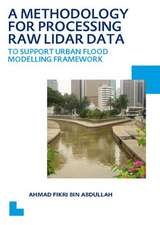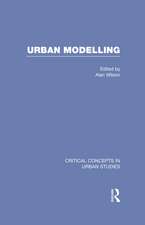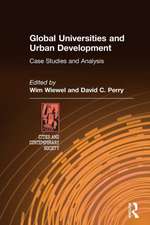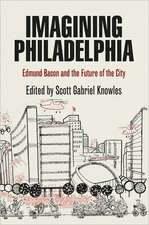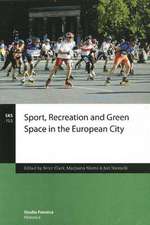Urban Interstices: The Aesthetics and the Politics of the In-between
Autor Andrea Mubi Brighentien Limba Engleză Hardback – 13 noi 2013
| Toate formatele și edițiile | Preț | Express |
|---|---|---|
| Paperback (1) | 469.34 lei 6-8 săpt. | |
| Taylor & Francis – 23 noi 2016 | 469.34 lei 6-8 săpt. | |
| Hardback (1) | 1056.47 lei 6-8 săpt. | |
| Taylor & Francis – 13 noi 2013 | 1056.47 lei 6-8 săpt. |
Preț: 1056.47 lei
Preț vechi: 1288.37 lei
-18% Nou
Puncte Express: 1585
Preț estimativ în valută:
202.17€ • 212.58$ • 167.04£
202.17€ • 212.58$ • 167.04£
Carte tipărită la comandă
Livrare economică 17 aprilie-01 mai
Preluare comenzi: 021 569.72.76
Specificații
ISBN-13: 9781472410016
ISBN-10: 1472410017
Pagini: 230
Ilustrații: Includes 50 b&w illustrations
Dimensiuni: 156 x 234 x 14 mm
Greutate: 0.5 kg
Ediția:New ed
Editura: Taylor & Francis
Colecția Routledge
Locul publicării:Oxford, United Kingdom
ISBN-10: 1472410017
Pagini: 230
Ilustrații: Includes 50 b&w illustrations
Dimensiuni: 156 x 234 x 14 mm
Greutate: 0.5 kg
Ediția:New ed
Editura: Taylor & Francis
Colecția Routledge
Locul publicării:Oxford, United Kingdom
Recenzii
’In a world of shattered polarities and twisted dichotomies, this important new book about urban interstices provides a unique and much needed roadmap into an emergent new conceptual geography of post-suburban territories.’ Roger Keil, The City Institute at York University, Canada ’Left over or in-between spaces in cities are receiving renewed attention as spaces of possibility, for everything from informal economies and political action to artistic and architectural interventions in the service of public engagement or hipster buzz. This terrific book on urban interstices makes an important contribution to these discussions. The chapters in the book engage with urban interstices not as left over places that simply exist, but as space-times that are constantly in production with complex relationships to events, subjects, laws, technologies, powers, projects and plans. Through engagements with a fascinating variety of places and practices, the authors show us how the possibilities of interstices can be identified and interrogated. Highly recommended.’ Kurt Iveson, University of Sydney, Australia ’Rethinking critically urban space is what social theory and urban studies are trying to do since the spatial turn. What this book suggests is a radical u-turn in both perception of space and analysis. It invites us to rethink the very dialectic between space, time and social situations. It is a reconsideration of the leftover, the apparently ephemeral, the event, the niche, all those marginal spaces that have been too easily discarded as mere cracks in the pavement of urban theory. This book, edited and written by affirmed and soon-to-be affirmed authors, does the job in a convincingly vivid way. The in-betweenness of our life now has its spatial handbook.’ Giovanni Semi, University of Turin, Italy
Cuprins
Introduction, Andrea Mubi Brighenti; Chapter 1 What Sort of a Legal Space is a City?, Nicholas Blomley; Chapter 2 Trajectories of Interstitial Landscapeness: A Conceptual Framework for Territorial Imagination and Action, Luc Lévesque; Chapter 3 Tent Cities: Interstitial Spaces of Survival, Don Mitchell; Chapter 4 Spatial Justice in the Lawscape, Andreas Philippopoulos-Mihalopoulos; Chapter 5 Coming up for Air: Comfort, Conflict and the Air of the Megacity, Peter Adey; Chapter 6 Automobile Interstices: Driving and the In-Between Spaces of the City, Iain Borden; Chapter 7 Interstitial Space and the Transformation of Retail Building Types, Mattias Kärrholm; Chapter 8 Interim Users in Residual Spaces: An Inquiry Into the Career of a Pier on the Hudson Riverfront, Stéphane Tonnelat; Chapter 9 The Urban Fringe as a Territorial Interstice: On Alpine Suburbs, Andrea Mubi Brighenti; Chapter 10 Active Interstices: Urban Informality, the Tourist Gaze and Metamorphosis in South-East Asia, Ross King, Kim Dovey;
Descriere
Bringing together a team of international scholars with an interest in urban transformations, spatial justice and territoriality, this volume questions how the interstice is related to the emerging processes of partitioning, enclave-making and zoning, showing how in-between spaces are intimately related to larger flows, networks, territories and boundaries. Illustrated with a range of case studies from places such as the US, Quebec, the UK, Italy, Gaza, Iraq, India, and South-east Asia, the volume analyses the place and function of interstitial locales in both a ’disciplined’ urban space and a disordered space conceptualized through the notions of ’excess’, ’danger’ and ’threat’.





